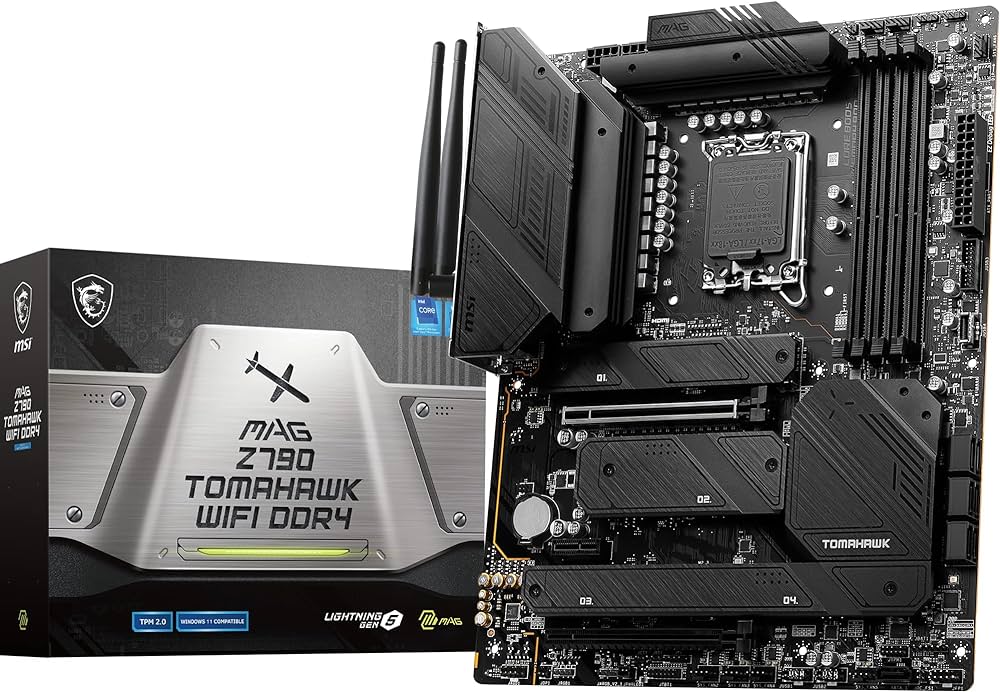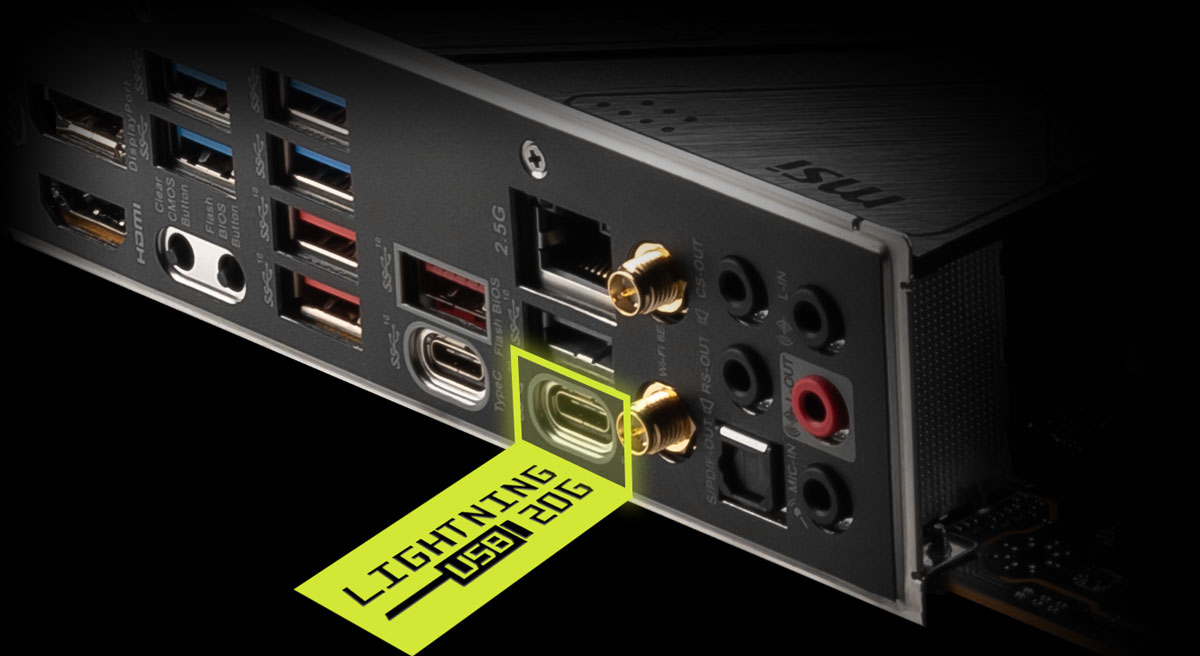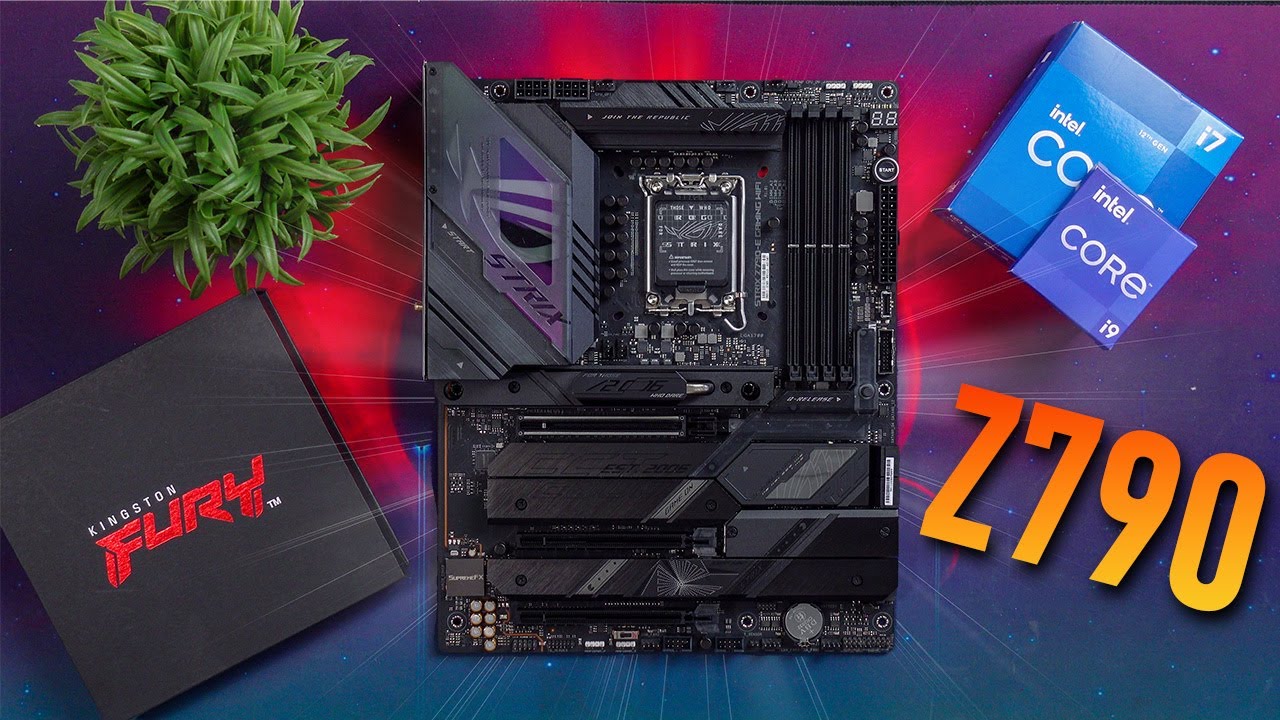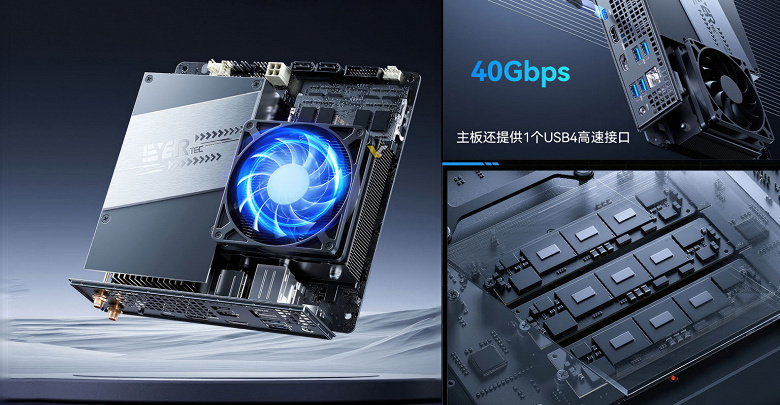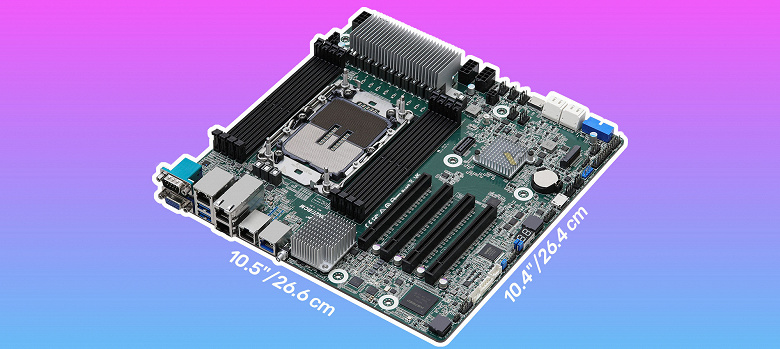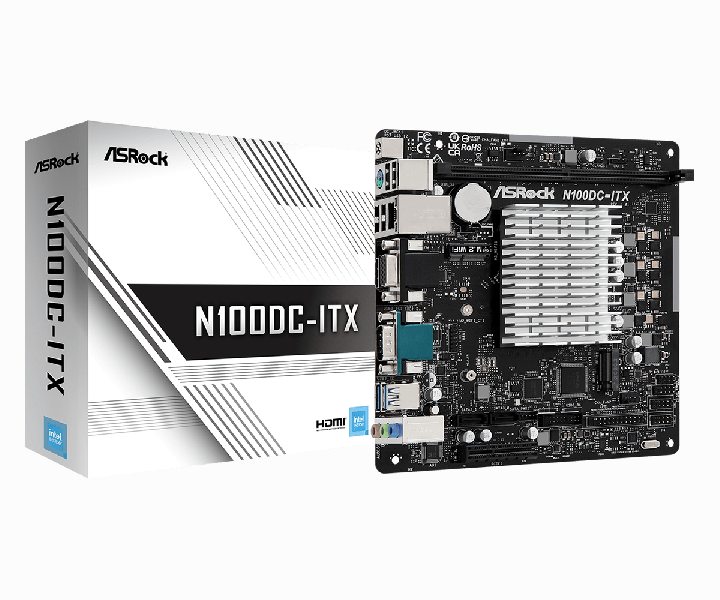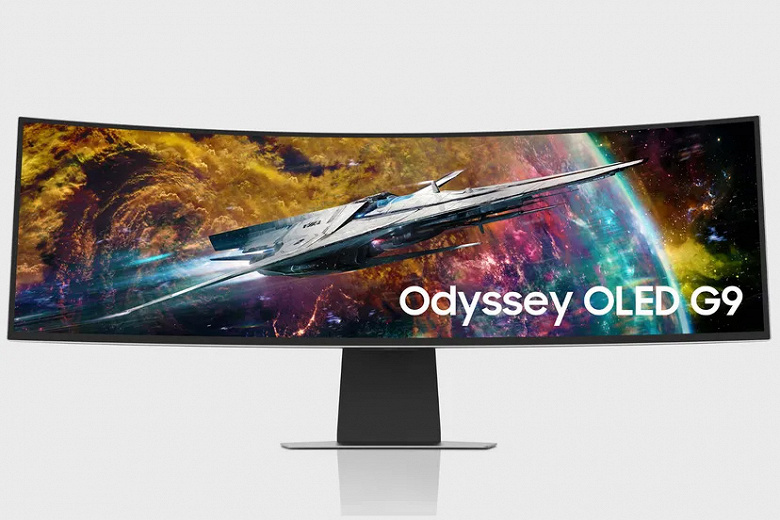
Supermicro will release the motherboard “M12 SWA-TF” compatible with the high-end CPU “Ryzen Threadripper PRO” for AMD professionals on March 26, the same as the domestic single sale of the processor. The price is an open price. This time, with the cooperation of Supermicro, we have obtained this product and Ryzen Threadripper PRO 3975WX, so we would like to verify its performance.
Ryzen Threadripper’s similar and different “PRO”
As the name implies, Ryzen Threadripper PRO is a product with almost the same character as Ryzen Threadripper. However, because it is labelled “PRO”, it is differentiated to some extent. The main differences are summarized below.
- The clock is slightly lower when comparing those with the same number of cores
- Memory channel doubled from 4 to 8
- Supports Registered DIMMs (also supports Unbuffered DIMMs)
- PCI Express lane increased from 72 to 128
- Full memory encryption
- Remote management function
- Not compatible with Ryzen Master
Also, in Ryzen Threadripper, the minimum core configuration is 16/32 start, but in Ryzen Threadripper PRO it is 12 cores / 24 threads. It doesn’t require that many CPU cores, but it can be said that it is designed for GPGPU processing that requires a large amount of PCI Express lanes and data transfer/processing applications that consume a large amount of memory bandwidth.
| CPU | 3990X | PRO 3995WX | 3970X | PRO 3975WX | 3960X | PRO 3955WX | PRO 3945WX |
|---|---|---|---|---|---|---|---|
| Number of cores/threads | 64/128 | 32/64 | 24/48 | 16/32 | 12/24 | ||
| Base clock | 2.9GHz | 2.7GHz | 3.7GHz | 3.5GHz | 3.8GHz | 3.9GHz | 4GHz |
| Maximum boost clock | 4.3GHz | 4.2GHz | 4.5GHz | 4.2GHz | 4.5GHz | 4.3GHz | |
| Total L1 cache | 4MB | 2MB | 1.5MB | 1MB | 768KB | ||
| Total L2 cache | 32MB | 16MB | 12MB | 8MB | 6MB | ||
| Total L3 cache | 256MB | 128MB | 128MB | 64MB | |||
| package | sTRX4 | sWRX8 | sTRX4 | sWRX8 | sTRX4 | sWRX8 | |
| Memory channel | Four | 8 | Four | 8 | Four | 8 | |
| PCI Express | 72 | 128 | 72 | 128 | 72 | 128 | |
Compared to Ryzen Threadripper, I / O is strengthened, but the decrease in CPU computing performance is negligible. On the other hand, compared to EPYC for servers, the operating clock is clearly higher (EPYC is 3.9GHz at the maximum), and the computing performance as a CPU is high. Therefore, it can be said that Ryzen Threadripper PRO is a product that has a good balance of the advantages of Ryzen Threadripper and EPYC.
Due to the increase in the number of memory channels and PCI Express lanes, and support for Registered DIMMs, it cannot be used with conventional sTRX4 motherboards, and a new platform called sWRX8 is required.

In fact, the sWRX8 platform was announced in July 2020, and a Lenovo workstation called “ThinkStation P620” equipped with it was also on sale in Japan from October of the same year. The topic on March 26th is that “general consumers can now obtain the CPU and motherboard separately, and can make their own.”
Supermicro’s “M12 SWA-TF” is the motherboard that will be launched on April 7th, a little later in line with this release. With the M12SWA-TF, users can enjoy the high-end platform performance of Ryzen Threadripper PRO. Let’s take a closer look.
M12 SWA-TF with the strongest degree of freedom in overwhelming I / O
The M12SWA-TF uses the Extended ATX form factor to take full advantage of the 128-lane PCI Express of the Ryzen Threadripper PRO. With a generous layout, in addition to six PCI Express 4.0 x16, four M.2s are openly equipped in front. All of these interfaces are directly connected to the CPU’s PCI Express and use 112 lanes.

Of the remaining lanes, 4 lanes are used by Marvell’s 10 Gigabit Ethernet “AQC113C”, 4 lanes are used by ASMedia’s USB 3.2 controller “ASM3242”, 1 lane is used by Intel’s I210-AT, and 1 lane is used by ASpeed’s BMC “AST2600”. In other words, most of the PCI Express directly connected to the CPU is utilized. In addition, since it does not go through a switch, there is no exclusive relationship or lane reduction due to the increase in devices. It’s a completely uncompromising implementation.
Only two U.2 and four SATA 6Gbps, four of the rear USB 3.0 ports, and Realtek’s audio controller “ALC4050H” and I2S audio codec “ALC1220” via USB 2.0 connect to the PCH. (As an aside, the installation of ALC4050H seems to be a major configuration even on the Ryzen Threadripper motherboard).
There are three PCI Express slots between the top and bottom, but they are mounted with one slot open. In this case, even a 3-slot occupying video card such as the GeForce RTX 3090 can be installed with plenty of room, 4 for a 2-slot occupying card, and 6 for a 1-slot occupying card. The biggest point of this product is that expansion cards can be flexibly mounted according to the application.
For example, you can fill all the slots with GPU and use it for arithmetic processing, or mount one GeForce RTX 3090 on the top and convert PCI Express x4 x 4 M.2 SSD to x16 on the bottom. It can also be configured with an emphasis on storage speed, such as installing three cards. Of course, you are free to add cards that are difficult to install on a normal PC, such as SAS cards and NIC cards over 10GbE. And above all, it is attractive to be able to bring out all of these performances.
There are 8 memory slots. As mentioned above, Ryzen Threadripper PRO has 8 channel memory, so you can maximize the performance only by filling all of them. The memory supports all of Registered DIMM (ECC compatible, RDIMM) that is common on servers, ECC Unbuffered DIMM (ECC UDIMM) that is common on workstations, and Unbuffered DIMM (UDIMM) that is common on PCs. ..
This means that users can grow up to 2TB with Registered DIMMs if they need more memory to build their own. On the other hand, if you don’t need that much capacity, you can choose with ECC if you need reliability, or without ECC if you don’t. Like expansion cards, this one has a lot of freedom and flexibility. This is another advantage of Ryzen Threadripper PRO.
Simple board layout
In contrast to the abundant interface surroundings, the mounting components of the board itself are also simple. It’s not surprising that there are no PCI Express switches, but it’s safe to say that it’s energy-efficient because there’s nothing extra.
The feature is around the CPU power supply, no aluminium electrolytic capacitors are used, and all are mounted on the back with tantalum capacitors. The VRM has 12 + 3 phases, but it uses a narrow DrMOS chip (MP86966) and a coil, making it surprisingly compact.
The area around the power supply is hardened with MPS chips. There is no data sheet for the controller “MP2852” and the DrMOS “MP86966”, but the former is presumed to be a sister product of the AMD SVI2 compliant “MP2853” and is adopted in the latter Xilinx reference design for FPGAs. Has been done. Also, the power supply around the memory is made of MPS, and there are many special parts that do not have a spec sheet on the site.
The heat sink attached to DrMOS around the CPU is also small. At first glance, it is unreliable, but it does not generate a large amount of heat even under load, and it can be imagined that it is quite efficient. It shouldn’t be a problem with a typical PC case that has airflow.
The chipset heatsink is small and has a small fan. Because it is always full rotation, it produces a moderately high-pitched sound. However, considering that most of the devices are directly connected to the CPU as mentioned above, it seems unlikely that the chipset will generate heat. If you’re worried about it, disconnecting the connector on the standard fan and placing a large-diameter fan nearby instead seems to be sufficient (although not covered by warranty, of course).
The board is quite thick, which sets it apart from the ones for general consumers, and it has an atmosphere like that for workstations. In addition, the wiring has been devised to be as short as possible, and the DNA unique to Supermicro can be seen and hidden around here as well. It’s simple to implement, but once you get it, you’ll feel a different sense of superiority than the high-end consumer.
Precautions for assembling and renewed IPMI
Unlike general consumer mothers, M12SWA-TF has some precautions when assembling. One is that the memory slot spacing is quite narrow. For the time being, a memory with a heat sink that is thick to some extent like G.SKILL’s “Trident Z RGB” can be installed without problems, but the clearance is quite severe.
In this respect, I think that it is common to Ryzen Threadripper motherboards, but especially the slot near the CPU is quite close to the CPU socket. For this reason, low-height memory and memory without a heat spreader would be safer (though most RDIMMs, of course). In addition, it does not support XMP for overclocking, so it is better to use the memory where the JEDEC compliant DDR4-3200 profile is written to the SPD. This time, I used 4 sets of 3,200MHz compatible product “TC48G32S822K” made by Taiwan v-colour.
Another thing to note is that the product is supposed to be used for remote access, so the built-in AST2600 video output is turned on by default and is selected as the primary. Therefore, even if a video card is installed, the screen will not be output from there, and the output will be from the mini D-Sub 15 pin on the back.
To avoid this, you can select “Offboard” as the primary screen output on the BIOS, but since the BIOS screen is also output from the mini D-Sub 15 pin by default, it is connected to the mini D-Sub 15 pin. It means that you cannot set it without a display. That’s where remote-managed IPMI comes in.
This product is equipped with two wired LAN ports, one of which is in charge of Intel I210-AT, which is a dual-purpose port that can be managed by IPMI. If you connect this to the network, you can manage various things just by hitting the IP address from the Web browser without using any utility (as an aside, the IP address is distributed from DHCP, so the router setting screen Or search with the IPMIView app provided by the company). This includes KVM functions, which can be operated from the screen immediately after startup. You can use this to enter the BIOS and change the settings.
I have been indebted to the IPMI function for a long time, but I was surprised at the evolution of being able to access it directly from a Web browser. It is too convenient to be able to access it from the browser of a smartphone without using a separate utility. If you leave the default video output setting of the BIOS on Board and insert the USB memory containing the Windows 10 installer etc., you can also install the OS on a suitable device such as a smartphone.
By the way, the BIOS is text-based, simple and not as flashy as it should be, but it’s rare for workstations to take care of it in the first place. Of course there is no setting such as overclocking, but you can set voltage fixed and CPU function on / off.
Overwhelming performance. Performance cannot be demonstrated depending on the application, but it can be solved by devising
Finally, I would like to briefly look at the performance of this product and the combination of Ryzen Threadripper PRO 3975WX. The prepared test environment is as follows. For comparison, CPU is Core i9-10900K (PL2 = 250W, PL1 = 125W, Tau = 56 seconds), memory 32GB (Trident Z RGB DDR4-3200), motherboard C9Z490-PGW, SSD Plextor PX-512M5P, etc. The scores of almost the same environment equipped with are also shown for reference.
- CPU: Ryzen Threadripper PRO 3975WX
- Memory: v-color TC48G32S822K x 4 (DDR4-3200 native, 8GB x 8)
- Storage: Crucial M4 256GB
- Video card: Colorful iGame GeForce RTX 3090 Vulcan OC
- CPU cooler: ASUS Ryujin 360
- Power supply: ASUS ROG-THOR-1200P
- Power plan: Ryzen Balanced
First of all, Cinema 4D 23, which is the speciality of the Ryzen series, has a score of over 40,000. Since Cinebench R23 keeps loading for at least 10 minutes and then measures the score, it is disadvantageous for CPUs that become boost clock only for a short time, but even in that test, it got on the 40,000 mark, which is different from the mainstream. Showed the performance that makes a difference.
In this test, as mentioned above, the setting of Core i9-10900K is limited to PL1 = 125W, so the test values after 10 minutes of continuous load are naturally under this limit. Compared to that, the Ryzen Threadripper PRO 3975WX consumes 2.24 times more power and 3.17 times more performance, so its power efficiency is about 42% higher. After all, the power of the 7nm process is thought to be overwhelming.
In addition, the score of Single Core also shows a score that is thin to Core i9-10900K, and it can be seen that multithreading is not the only deal of Ryzen Threadripper PRO.
In the CPU test of SiSoftware Sandra, he recorded a very good score and showed his strength. In addition, the memory bandwidth test showed an overwhelming value of 121GB / s , achieving about twice the bandwidth of the previously reviewed Ryzen Threadripper 3970X. It is easy to imagine that it can perform better than Ryzen Threadripper for processing that involves a large amount of memory transfer or applications where memory transfer speed per core is important.
PCMark 10 was not much different from the mainstream. Of course, with high-speed CPUs and GPUs, the Digital Contents Creation item shows high values, but general Essentials and Office Productivity items that emphasize CPU clocks do not show such high performance. However, you can see that it has first-class performance as a high-end PC and is capable of daily use.
On the other hand, 3DMark was quite different from Core i9-10900K. Ryzen Threadripper PRO is not a CPU for gamers, so it is natural to say that. However, if you don’t care about the frame rate to the limit, you should keep in mind that you can play with a performance that is not a problem for practical use. Regardless of the profession like a professional gamer, for users who live-stream gameplay videos, edit various gameplay videos that they have taken later, and then upload them on a video sharing site, it is more than the absolute frame rate in the game. , I think that the overwhelming CPU processing power margin looks more attractive.
By the way, only the Time Spy test did not give the Graphics score. But there is a good reason for this. In the Zen 2 architecture of the Ryzen 3000 series, the smallest unit of CPU “CCX” (Core Complex) is a 4-core / 16MB L3 cache, which causes a bottleneck in processing across CCX. This is because processing that straddles a CCD (CPU Complex Die) in which two CCXs are on one die causes further delay. In Time Spy’s test suite, both CCX and CCD are distributed, which adds to the delay. In addition, if the light processing is load-distributed, the processing will be completed before each core reaches the boost clock completely.
To avoid this, the CPU affinity processed by the program may be fixed. Specifically, select the running process in the task manager etc., right-click → set the relationship, and limit the CPU to process to 1-7 (Ryzen Threadripper PRO has two in one core) It looks like it has two CPUs because the virtual thread is running).
However, 3DMark is executed in full screen, and since the benchmark executable file is called and executed from the 3DMark itself instead of the shortcut, it is not possible to change the dependency during the benchmark. Therefore, this time, using the free software “LimitCPU”, the startup of the executable file is monitored, and the function to automatically set the CPU affinity is used to set the benchmark execution file of 3DMark to CPU 0-7 (4 cores 8 threads). Limited to 1CCX) and CPU 0-15 (8 cores 16 threads 1CCD) and additional benchmarking.
As you can see from the results, the CPU score has been halved, but the Graphics Score has doubled. Most existing games are optimized for up to 4 cores / 8 threads, so this technique works. If you feel that the game performance does not come out as you expected with Ryzen Threadripper PRO, please try the same method.
By the way, I have conducted various benchmarks on the EPYC machine of HPC Systems before, but since it is also a CPU for servers, it does not have a surprising performance for general use (non-GPU). (Although it is due to the environment that it is installed), I felt that it was inappropriate as the CPU of the machine that I put in the room and use every day.
On the other hand, the combination of Ryzen Threadripper PRO + M12SWA-TF has obtained sufficient performance even for single thread processing that will be used by many general individuals and also has overwhelming performance as the multi-core performance of the entire CPU. Demonstrate. Still, it has abundant I / O that can be called a monster, so it can be said that it is the best environment that individuals can get and use.
Apart from these main benchmarks, I also tried some additional tests to measure the performance of PCI Express and 10 Gigabit Ethernet, all of which were as expected. Not only the absolute performance of the CPU but also the high performance around the I / O is a privilege unique to Ryzen Threadripper PRO and M12 SWA-TF.
In this test environment, it consumed about 160W when idle and about 410W when loaded with Cinema 4D (according to the power monitor installed in ROG THOR). The reason why the idle time remains high is probably because three RGB case fans have been added in this test environment, and the water cooling and video card have a monitoring display. The actual power consumption is not much different from the Ryzen Threadripper environment. Rather, the fact that it is not much different from the Ryzen Threadripper 3970X that was tested before under load may be a good design around the power supply of the M12 SWA-TF.
The CPU temperature changes around 82 ° C under load, which is similar to the Ryzen Threadripper 3970X. The latest 7nm process has the impression that it generates less heat than expected even if it consumes a lot of power, and its power efficiency is quite good.
The long-awaited Supermicro + AMD high-end platform
As you can see from Supermicro’s site, Intel has traditionally focused on workstation motherboards. The M12 SWA-TF is the first Supermicro to make its debut for AMD workstations and is a familiar product that can be used by general users.
Although this machine-made its AMD debut, it did not show any uneasy behaviour during the trial, and it showed overwhelming benchmark values. For users looking for unadorned simplicity and stability, the Supermicro + AMD option is just what you’ve been waiting for. No matter what I hide, I’ve always been eager to see a Ryzen-enabled motherboard from Supermicro.
The M12SWA-TF is a product that has fully responded to the enthusiasm of users. Not only for professional users who want a high-performance workstation but also for enthusiasts who want to make their own best PC, this is one that we can proudly recommend.
